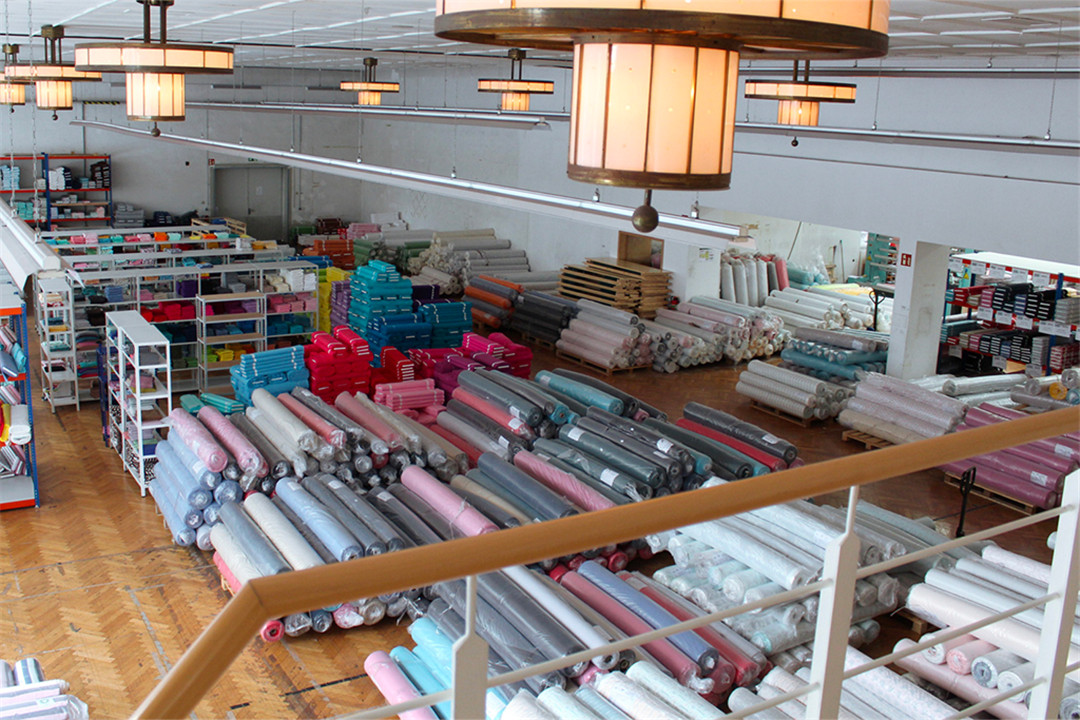For independent fashion labels sourcing a range of small quantities of stylish, sustainable fabrics can be a challenge. In this guide, we've gathered together 100+fabric wholesalers who can help fulfil your needs. Most offer worldwide shipping.
How it works
Take a look at our process

Upload your design
Before you begin it’s important your file is ready to be uploaded.

Choose your layout
Before we can print your design you’ll have to select your fabric layout. Below is a link to some great design tips.

Choose your fabric
Now you’re ready to choose one of 100+ fabrics to print on.

Wait for delivery!
The final step is to go through our checkout process. We accept all major debit/credit cards and PayPal.

Auschalink
Whether you are making new clothes or trying to figure out the right way to clean your dirty ones, understanding fabric can be important. This is especially true if you have a nice piece of fabric and want to properly take care of it, so it lasts longer. Different types of fabrics have different properties that can strongly influence how you treat your clothing. For example, the fiber content in one fabric will influence how to clean the garment completely differently from another fabric’s fiber content.
To help with some of this confusion and create a better understanding of fabric, let’s take a look at the 12 different types of fabric. Please keep in mind that there are actually hundreds of different types of fabric; this blog is simply looking at the 12 most popular types.


Woven vs. Knitted
The second differing detail is the production process used. Again, there are two types: woven and knitted.
Woven fabrics are made up of two pieces of yarn that interweave horizontally and vertically on a loom. Since the yarn runs at a 45-degree angle, the fabric doesn’t stretch and is usually tauter and sturdier than knit fabrics. The fabric consists of a weft (when the yarn goes across the width of the fabric) and a warp (when the yarn goes down the length of the loom).
There are three types of woven fabric: plain weave, satin weave and twill weave. Examples of popular woven fabrics are chiffon, crepe, denim, linen, satin and silk.
For knit fabric, think of a hand-knit scar; the yarn is formed into an interconnecting loop design, which allows it to stretch significantly. Knit fabrics are known for being elastic and keeping shape.
There are two types of knit fabric: warp-knitted and weft-knitted. Examples of popular knit fabrics are lace, lycra and mesh.
Now, let’s take a look at the 12 different types of fabric.
Chiffon
Chiffon is a sheer, lightweight, plain-woven fabric made from twisted yarn that gives it a slightly rough feel. The yarn is usually made of silk, nylon, polyester or rayon.
Chiffon can be easily dyed and is usually seen in scarves, blouses and dresses, including wedding gowns and prom dresses, due to its light, flowing material.


Denim
Another type of fabric is denim. Denim is a woven cotton twill fabric made from entwined cotton wrap yarn and white cotton stuffing yarn. It is often known for its vivid texture, sturdiness, durability and comfortableness.
Denim is mostly dyed with indigo to create blue jeans, but it is also used for jackets and dresses.

Cotton
Known as the most popular material in the world, cotton is a light, soft natural fabric. The fluffy fiber is extracted from the seeds of the cotton plant in a process called ginning. The fiber is then spun into cloth, where it can be woven or knit.
This fabric is praised for its comfortableness, versatility and durability. It is hypoallergenic and breathes well, though it doesn’t dry quickly. Cotton can be found in virtually any type of clothing: shirts, dresses, underwear. However, it can wrinkle and shrink.
Cotton yields many types of additional fabrics, including chino, chintz, gingham and muslin.

Woven vs. Knitted
Crepe is a lightweight, twisted plain-woven fabric with a rough, bumpy surface that doesn’t wrinkle. It is often made from cotton, silk, wool or synthetic fibers, making it a versatile fabric. Due to this, crepe is usually called after its fiber; for example, crepe silk or crepe chiffon.
Crepe is often used in suit and dressmaking since it’s soft, comfortable and easy to work with. For example, georgette is a type of crepe fabric often used in designer clothes. Crepe is also used in blouses, pants, scarves, shirts and skirts

Lace
Lace is an elegant, delicate fabric made from looped, twisted or knitted yarn or thread. It was originally made from silk and linen, but lace is now made with cotton thread, wool or synthetic fibers. There are two main elements to lace: the design and the ground fabric, which holds the pattern together.
Lace is considered a luxury textile, as it takes time and expertise to create the open-weave design and web-like pattern. The soft, transparent fabric is often used to accent or embellish clothing, especially with bridal gowns and veils, though it can be found in shirts and nightgowns.

Leather
Leather is a unique type of fabric in that it is made from animal hides or skins, including cows, crocodiles, pigs and lamb. Depending on the animal used, leather will require different treatment techniques. Leather is known for being durable, wrinkle-resistant and stylish.
Suede is a type of leather (usually made from lamb) that has the “flesh side” turned outward and brushed to create a soft, velvety surface. Leather and suede are often found in jackets, shoes and belts since the material keeps the body warm in cold weather.

Linen
The next fabric is linen, which is one of the oldest materials known to humankind. Made from natural fibers, this strong, lightweight fabric comes from the flax plant, which is stronger than cotton. The flax strands are spun into yarn, which is then blended with other fibers.
Linen is absorbent, cool, smooth and durable. It is machine-washable, but it needs regular ironing, as it creases easily. Though it can be used in clothing, including suits, jackets, dresses, blouses and trousers, linen is mostly used in drapes, tablecloths, bedsheets, napkins and towels.

Satin
Unlike most of the fabrics on this list, satin is not made from a fiber; it is actually one of the three major textile weaves and is made when every strand is well-knitted. Satin was originally made from silk and is now made from polyester, wool and cotton. This luxurious fabric is glossy, elegant and slippery on one side and matte on the other.
Noted for its sleek, smooth surface and lightweight, satin is often used in evening and wedding gowns, lingerie, corsets, blouses, skirts, coats, outerwear and shoes. It can also be used as a backing to other fabrics.

Silk
Known as the world’s most luxurious natural fabric, silk is another soft, elegant fabric choice with a smooth touch and shimmering look. Silk comes from the silkworm’s cocoon, which are found in China, South Asia and Europe.
It is the most hypoallergenic, durable, strongest natural fabric, though it is difficult to clean and delicate to handle; many fabric weaves tighten or pucker when washed, so it’s best to hand wash or dry clean silk. Like lace, satin is expensive due to the time-consuming, delicate process or turning the silk thread into yarn.
Silk is mostly used in wedding and evening gowns, shirts, suits, skirts, lingerie, ties and scarves. The two most popular types are Shantung and Kashmir silk.
Synthetics
Unlike the other fabrics listed here, synthetics actually cover several fabric types: nylon, polyester and spandex. Synthetics don’t shrink, unlike delicate fabrics, and are usually resistant to water-based stains.
Nylon is a completely synthetic fiber made up of polymers. It is known for its strength, flexibility and resilience. Nylon is also long-lasting and handles wear and tear, which is why it is often seen ins outerwear, including jackets and parkas.
Polyester is a man-made synthetic fiber and fabric created from petrochemicals. Though it is strong, durable and wrinkle and stain-resistant, polyester is not breathable and doesn’t absorb liquids well. Instead, it is designed to move moisture away from the body. Most T-shirts, trousers, skirts and sportswear are made from polyester.
Arguably the most popular synthetic material is spandex, which is made from polyurethane. Also known as Lycra or elastane, spandex is known for its lightweight, elasticity and strength after being blended with several fiber types. This comfortable, form-fitting material is often used in jeans, hosiery, dresses, sportswear and swimwear.


Velvet
Another different type of fabric is the soft, luxurious velvet, which has mostly been associated with royalty due to its rich, opulent finishing and complex production process. This heavy, shiny woven warp pile fabric has a smooth pile effect on one side. The textile’s quality is determined by the pile tuft’s density and the way they are anchored to the base fabric.
Velvet can be made from cotton, linen, cool, silk, nylon or polyester, making it a versatile material that is either inelastic or stretchy. It is often used in blouses, shirts, coats, skirts, evening wear and outerwear.

Wool
Our last different type of fabric is wool. This natural fiber comes from sheep, goat, llama or alpaca fleece. It can be knitted or woven.
Wool is often noted for being hairy and itchy, though it keeps the body warm and is durable and long-lasting. It is also wrinkle-free and resistant to dust and wear and tear. This fabric can be a bit expensive, as it needs to be hand-washed or dry-cleaned. Wool is mostly used in sweaters, socks and gloves.
Types of wool include tweed, Cheviot fabric, cashmere and Merino wool; Cheviot fabric is made from Cheviot sheep, cashmere is made from cashmere and pashmina goats and Merino wool is made from Merino sheep.


